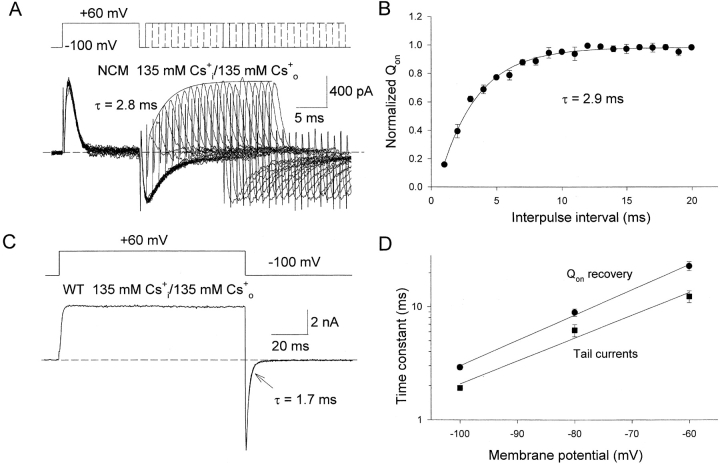Figure 7.
Rate of gating charge recovery and channel closure in WT Kv1.5 and NCM channels in the presence of 135 mM Cs+ i/o. (A) Top, the same double-pulse protocol as shown in Fig. 3 A. Bottom, superimposed gating current traces elicited by the protocol shown at the top. Currents were recorded with symmetrical 135 mM Cs+ i/o solutions from NCM channels. Solid line is the single exponential fitting to the peak of on-gating currents with τ = 2.8 ms. The dotted line represents the zero current level. (B) Fractional recovery of Qon (Qon test/Qon prepulse) is plotted as a function of the interpulse interval. Data points represent means ± SEM (n = 4). The solid line is the best fit to data points using a single exponential function with τ = 2.9 ± 0.1 ms. (C) Top, voltage protocol used to elicit the current below. Bottom, whole cell current through WT Kv1.5 channels with symmetrical 135 mM Cs+ i/o solutions. The tail was fitted by a single exponential function with a time constant (τ) of 1.7 ms. The dotted lines represent the zero current level. (D) Time constants of voltage-dependent deactivation (tail currents) and gating charge recovery (Qon recovery) of Kv1.5 channels in the presence of Cs+ i/o, plotted as functions of repolarization potential. Data points represent mean ± SEM (n = 4–6). Solid lines represent the linear fitting to data points.

